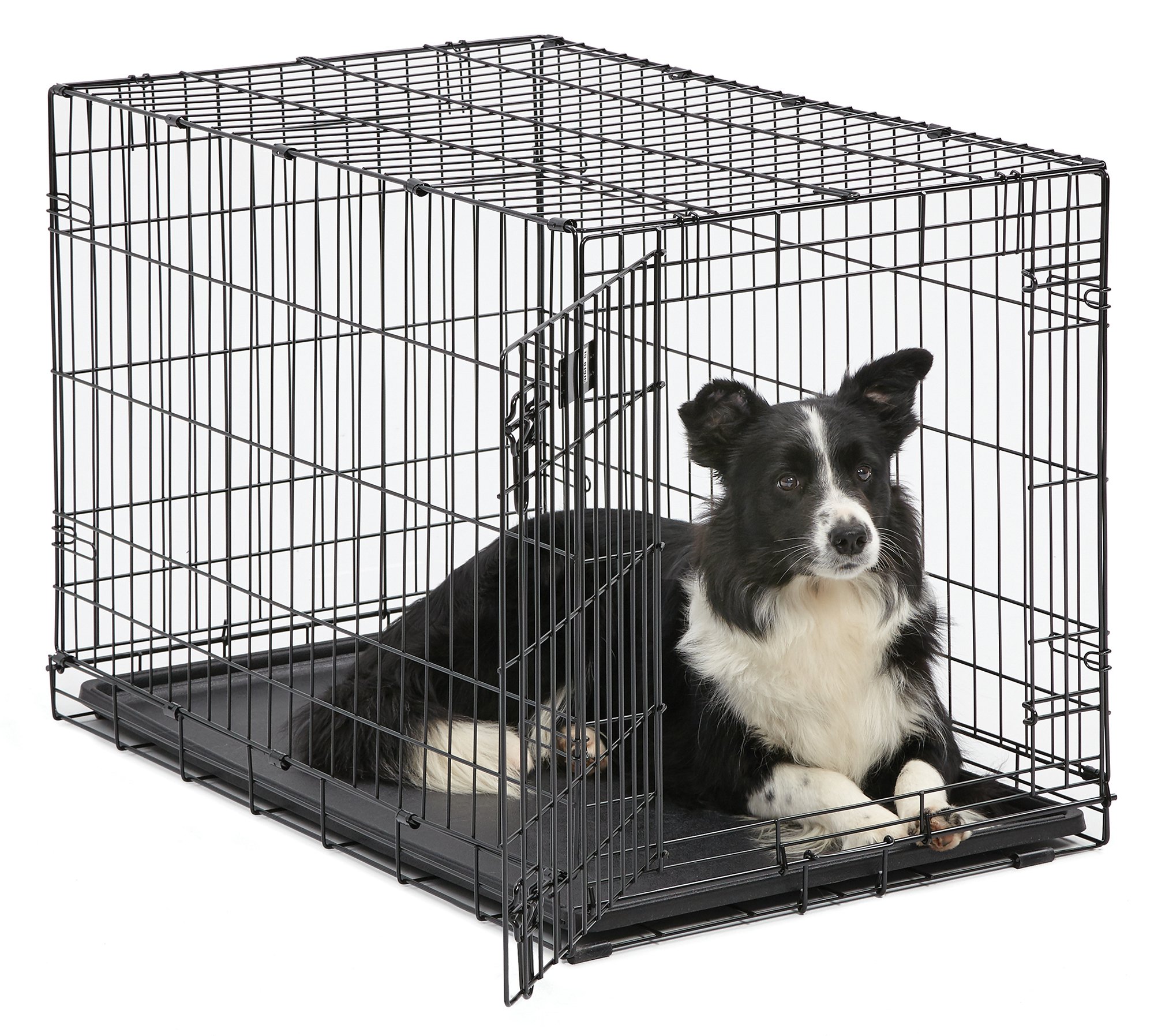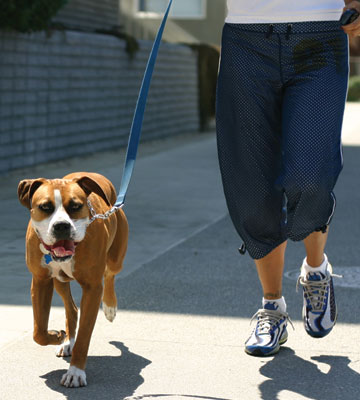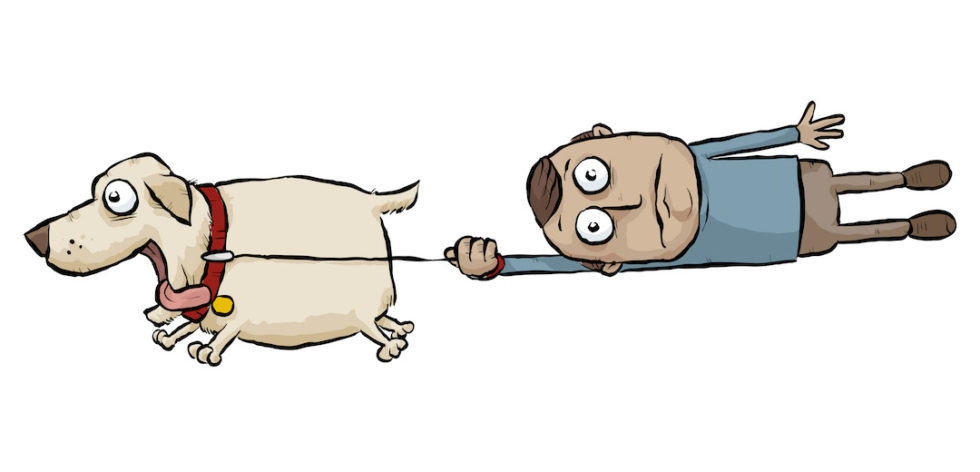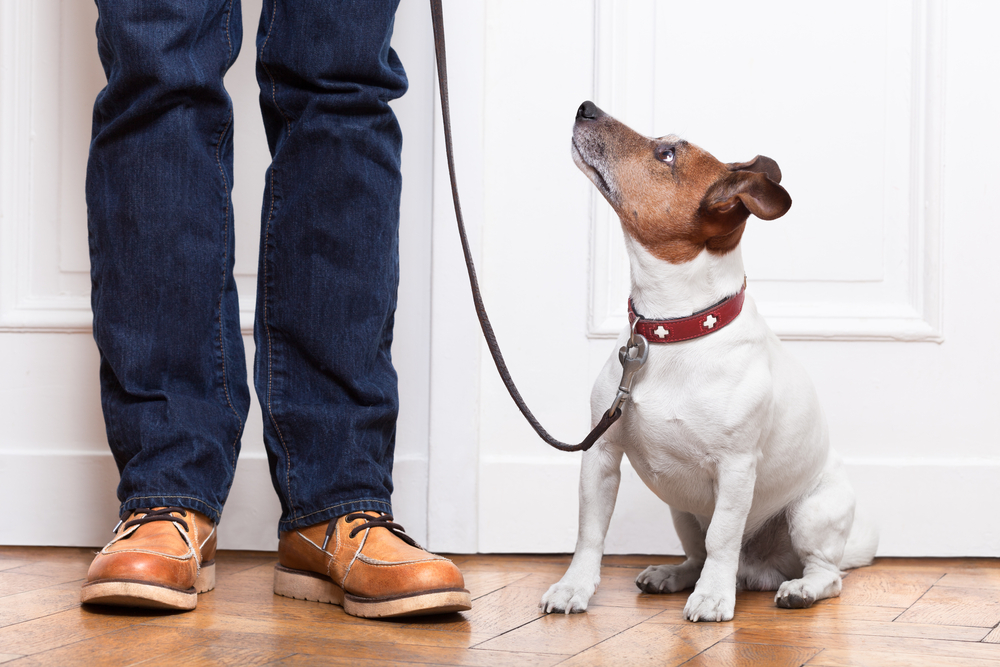The first thing a pup needs is a crate. It must be big enough for him to stand up and turn around in, and get one large enough for him to grow into. There are many different kinds. I like the wire ones, because pup is contained and safe but you can still see him, and he can see you. I like to drape a blanket over the back half to make it feel cozier.

This is your pup's bedroom. It's his very own safe den, and it is important. When your dog is tired, when he is scared by loud noises, when he has a special treat -- this is where he knows he can go to be secure.
Introduce your pup to his crate gently. Leave the door wide open, with some tasty treats inside, and let him step in on his own. Don't be in a rush to shut the door right away. Let him go in and out and sniff all around. If he seems hesitant, pick him up and gently set him inside, praising him all the time. Show him the treats inside. Don't hold him or force him to stay; let him explore it on his own.
We want the pup to learn that the crate is a wonderful thing and good stuff is in there.
Once he's seen and sniffed this interesting new place and is feeling happy, close the door -- just for a second! -- and then open it again right away. Good puppy! Use a calm tone and smile, but don't make it sound like a game; crates are for quiet, not play.
Did pup even notice the door was closed? Close it again, just for a moment. Then open again and praise.
Then go do something else. Play with a toy, go outside for a potty break -- something away from the crate. Later on, go back and show pup the crate again. Take it slow and be relaxed. Once pup is in the crate with a treat, close the door again. Count one, two, three -- and open it. Good puppy!
In these short sessions, you want your pup to learn that the door shuts, but he's not trapped. The door opens again, and you are there, and it's okay.
Your important job is to wear that puppy out today. Play play play. Make him oh so tired. When you can tell he's ready to nap, go to the crate. Maybe put a favorite snuggly toy in there for comfort. He might go in on his own, but need a few pats from you before he falls asleep. (Or maybe you'll hold him until he's asleep because sleepy puppies are so cuddly!) Once he's in his crate and snoring away, close the door quietly. Wait a moment, then go about your business.
You want to be there when he wakes up from his nap, so have the crate in the same place you are-- in your office or kitchen or workshop or by the couch. That way you can do your own thing, and still be nearby to open the door of the crate when pup wakes up.
Let him wake up and realize the door is shut. Tell him he's a good pup and open the door. (Then take him out to pee, because pups always need to pee when they wake up.)
Over the next few days, you can use those frequent puppy naps to slowly increase the amount of time between puppy waking and you opening the door. When you notice he's awake, talk to him softly for a moment before opening the door. Have him wait a little so he starts to understand that the closed door isn't a problem; that you'll always open it for him.
Soon your pup will understand that the crate is his den -- his Fortress of Solitude -- where he can relax and sleep undisturbed, and you will have gained a terrific tool for training.
More on how to use the crate for training next time!








